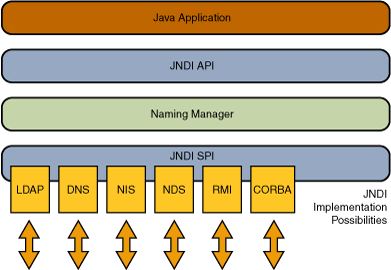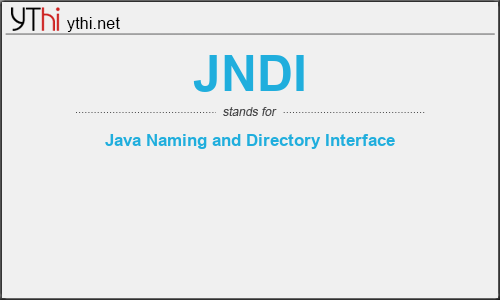What does JNDI mean? What is the full form of JNDI?
The full form of JNDI is Java Naming and Directory Interface.
The Java Naming and Directory Interface™ (JNDI) is an application programming interface (API) that provides naming and directory functionality to applications written using the Java™ programming language. It is defined to be independent of any specific directory service implementation. Thus a variety of directories -new, emerging, and already deployed can be accessed in a common way.
Architecture
The JNDI architecture consists of an API and a service provider interface (SPI). Java applications use the JNDI API to access a variety of naming and directory services. The SPI enables a variety of naming and directory services to be plugged in transparently, thereby allowing the Java application using the JNDI API to access their services. See the following figure:

jndiarch
Packaging
JNDI is included in the Java SE Platform. To use the JNDI, you must have the JNDI classes and one or more service providers. The JDK includes service providers for the following naming/directory services:
- Lightweight Directory Access Protocol (LDAP)
- Common Object Request Broker Architecture (CORBA) Common Object Services (COS) name service
- Java Remote Method Invocation (RMI) Registry
- Domain Name Service (DNS)
Other service providers can be downloaded from the JNDI page or obtained from other vendors.
The JNDI is divided into five packages:
- javax.naming
- javax.naming.directory
- javax.naming.ldap
- javax.naming.event
- javax.naming.spi
JNDI
means
Java Naming and Directory Interface![]()
Translate Java Naming and Directory Interface to other language.


Leave a Reply
You must be logged in to post a comment.